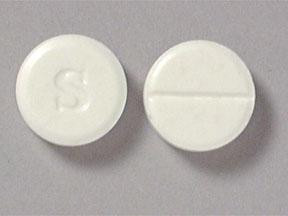CLOMIPHENE - ORAL
PHONETIC PRONUNCIATION: (KLOE-mi-feen)
COMMON BRAND NAME(S): Clomid, Serophene
GENERIC NAME(S): clomiphene citrate
Uses
USES: This medication is used to treat infertility in women. It works by stimulating an increase in the amount of hormones that support the growth and release of a mature egg (ovulation). This medication is not recommended for women whose ovaries no longer make eggs properly (primary pituitary or ovarian failure).
How to use CLOMIPHENE - ORAL
HOW TO USE: Clomiphene must be taken by mouth exactly as directed by your doctor in order to be most effective. It is important to follow your dosing schedule carefully. Your dosage is based on your medical condition and response to therapy. Do not take it more often or for a longer time than prescribed by your doctor. Long-term treatment with this medication is not recommended and should not be more than 6 cycles. You may be directed to record your body temperature, perform ovulation tests, and properly time sexual intercourse for best results. Ask your doctor if you have any questions.
Side Effects
Precautions
Interactions
Overdose
Images

- color
- off-white
- shape
- round
- imprint
- par 701

- color
- off-white
- shape
- round
- imprint
- par 701

- color
- off-white
- shape
- round
- imprint
- par 701
Reviews
Faq for CLOMIPHENE - ORAL
Clomiphene is an oral medication used to treat infertility in women. It stimulates the release of hormones necessary for ovulation to occur.
Clomiphene works by blocking estrogen receptors in the hypothalamus, which leads to an increase in follicle-stimulating hormone (FSH) and luteinizing hormone (LH). The rise in these hormones triggers the release of eggs from the ovaries.
Women who have difficulty getting pregnant due to irregular ovulation or anovulation (lack of ovulation) can be candidates for Clomiphene treatment.
The typical starting dose for Clomiphene is 50 milligrams per day for five days, usually starting on the fifth day of a menstrual cycle. The dosage may be adjusted based on individual response.
Common side effects of Clomiphene may include hot flashes, mood swings, breast tenderness, nausea, and headaches. In rare cases, there can be more severe side effects like ovarian hyperstimulation syndrome (OHSS) or visual disturbances.
Clomiphene treatment usually lasts for five days per cycle. Success rates vary, but ovulation can occur within seven to ten days after finishing the treatment. However, it may take multiple cycles with increasing dosages or additional interventions to achieve pregnancy.
While Clomiphene is generally considered safe, there is a small risk of ovarian hyperstimulation syndrome (OHSS), multiple pregnancies, and the potential for ectopic pregnancy (implantation of the fertilized egg outside the uterus). It is important to discuss these risks with a healthcare provider.
Yes, Clomiphene can also be used to treat infertility in men by increasing the production of sperm. It helps stimulate the pituitary gland to produce more follicle-stimulating hormone (FSH) and luteinizing hormone (LH), which stimulates the testicles to produce sperm.
No, Clomiphene should not be used during pregnancy as it can harm the developing fetus. It is important to discontinue the medication and consult with a healthcare provider if pregnancy occurs while taking Clomiphene.
Disclaimer
IMPORTANT: HOW TO USE THIS INFORMATION: This is a summary and does NOT have all possible information about this product. This information does not assure that this product is safe, effective, or appropriate for you. This information is not individual medical advice and does not substitute for the advice of your health care professional. Always ask your health care professional for complete information about this product and your specific health needs.

No Reviews Yet